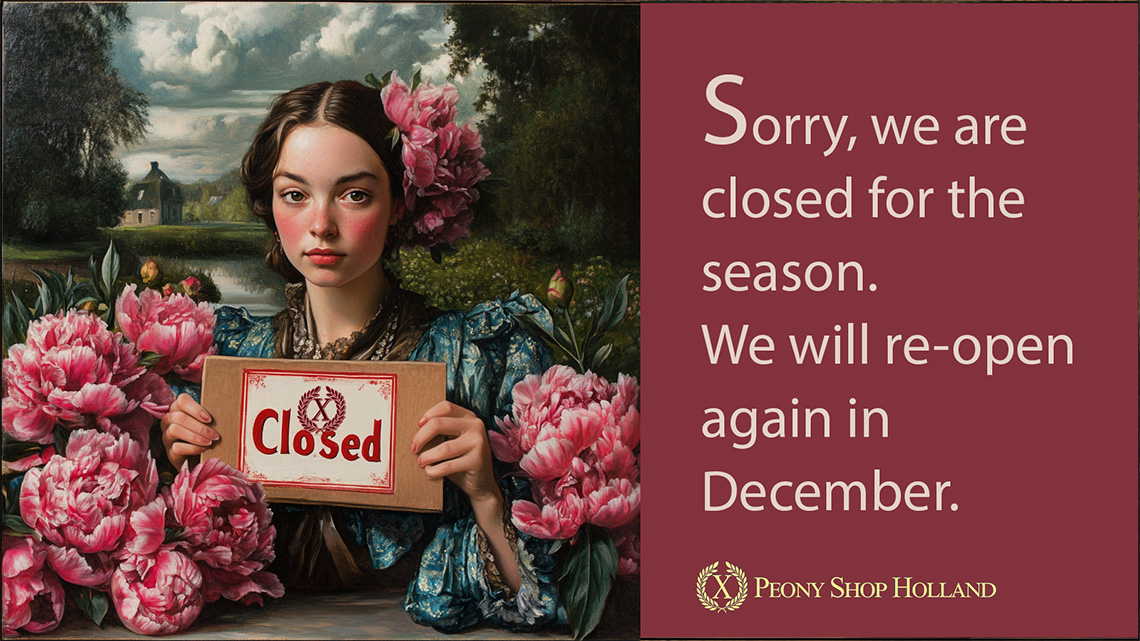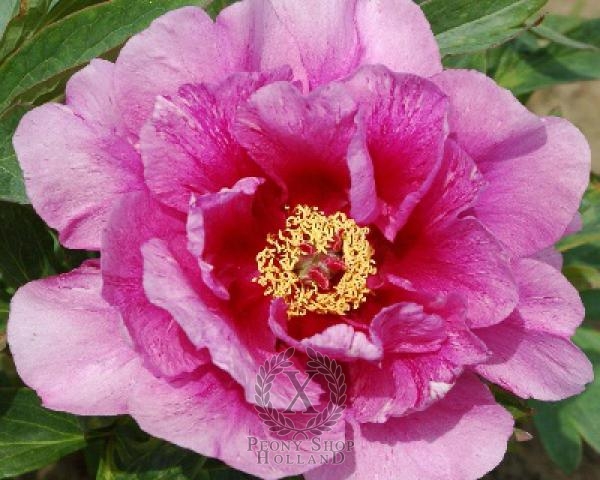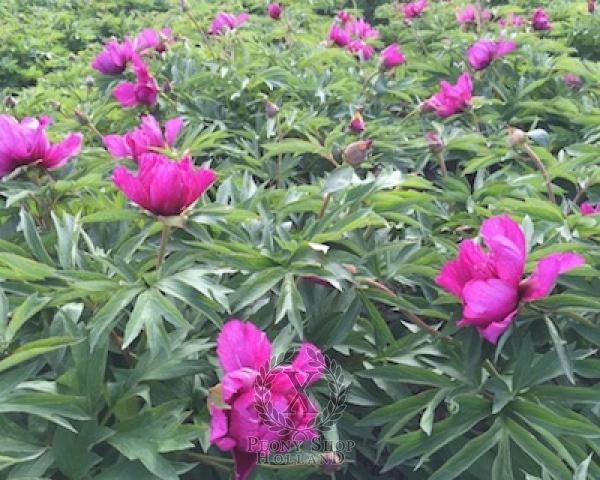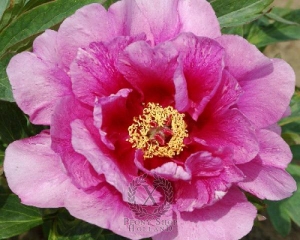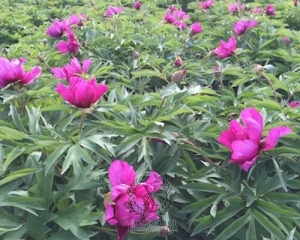Peony Sonoma Amethyst
| Size | Weight |
|---|---|
| 3/5 eye | 300 gram |
Peony Sonoma Amethyst is one of the many special semi-double lavender Itoh Peonies that we grow at Peony Nursery Peony Shop Holland. Itoh Hybrid Sonoma Amethyst is lovely plant for in the garden with attractive lavender flowers and its typical Itoh foliage. Intersectional peony hybrids, also known as Itoh hybrids, named in honor of Toichi Itoh, the originator of these unique hybrid peonies. They are representative of the progeny of crossing or hybridizing the two main groups or selections of peonies; the herbaceous hybrids which die down sub surface buds during their dormant season and the tree or woody shrub peonies which retain a year round woody branch structure above ground level. During their dormant season, the Itoh or Intersectional hybrids retain only extremely short (1"-2") woody stems above ground level. Ornamentally, they achieve the best of both parental worlds with the handsome flowers and foliage of the woody tree peonies displayed on an herbaceous plant, with annual new growth originating from buds below ground level. Strong healthy plants form attractive dense, neat rounded bushes which are shorter in stature than most tree peonies. Flowers are displayed above the handsome foliage that remains greener longer than their herbaceous parents. Intersectional hybrids are somewhat hardier than tree peonies and more tolerant of heat and humidity which extends their ornamental potential in both the North and south.
Regarding Peony Nursery "Peonyshop.com" Peony Shop Holland
Peony Growers Peonyshop.com at this time primarily concentrates on building unique, extraordinary best quality peonies. This particular emphasis hasn't been always the main situation. The corporation comes with an broad background starting in the year 1875 with the help of Simon Scholten who also has been growing greens for an income.
In the year 2001 the particular organization formed their very own new selling-name & brand "Peonyshop.com" and after that they started off centering on increasing unique peonies. During the year 2002 this corporation opened their on-line peonyshop together with Peonies & Buxus. In the year 2003 Joshua Scholten started off on with raising peonies. Than in 2004 this business organisation began to export peonies out of the Netherlands throughout European countries, America and additionally Asian countries.
Right now our own peony nursery is focused on expanding and spreading special, high-quality peony roots which have been marketed and released throughout the world. Furthermore we even cut peonies primarily helping the Dutch peony flower market.
The most important things we pride:- The high-quality of our own products
- Our ability to export international
- All of our wide-ranging collection peonies like Sonoma Amethyst
- Our crame of large potential seedling peonies
Growing Sonoma Amethyst peony plants
The fall is really a suitable moment for seeding peonies. These peonies tend to be exceptionally long-term-lived plants long lasting close to fifty up to seventy years, so right after an individual have them selected and planted correctly, you will definitely enjoy the plants for a long time. These plants like a sunny area having a well-drained dirt. A good air flow circulation available the plant can also be important and vital. These kind of environs help peonies stay away from illness problems. To organize the seeding hole meant for a bareroot peony plant, dig the dirt into a level of 12-18". Make use of garden tools to remove the edges of the seeding hole at the same time. It is always extremely important and vital that the particular "eyes", or growth nodes, located nearby the base of the old stem, end up no more than 2 " below the ground surface area.
